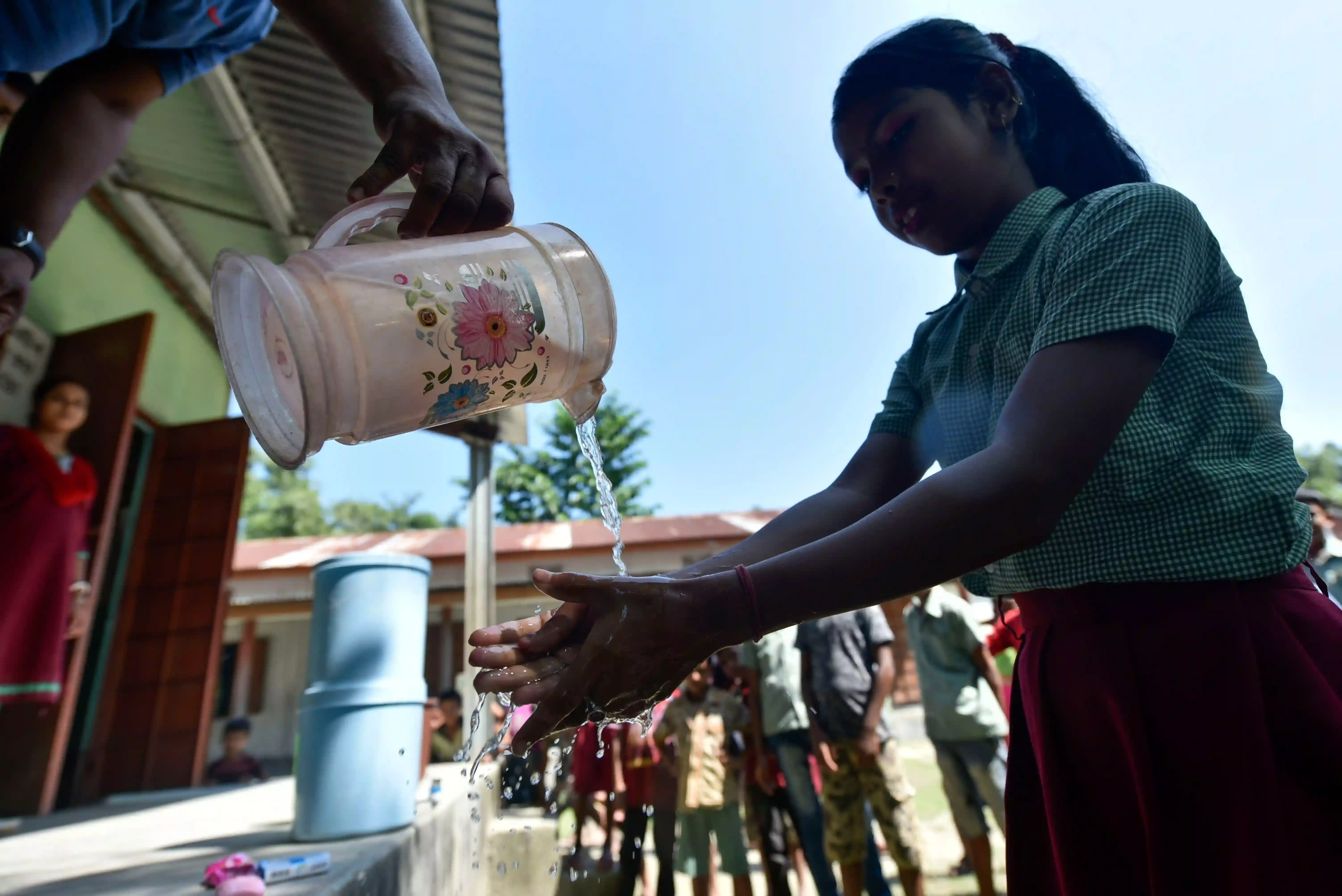Jal Shakti Ministry Claims 78% Anganwadis Get Tap Water, But Omits 2.75L Centres
Jal Jeevan Mission’s target for anganwadi centres in the country much lower than the total operational centres

Representational Image (Pic credit: Shutterstock)
Forty-four-year-old Manoj Kumari, an anganwadi worker in Uttar Pradesh's Moradabad carries boiled water from her home everyday as there is no clean water available at the centre she works at. "The government has built taps but many are not functional. I take care of four kendras in my campus and none have water in latrines or kitchens. We fill water from outside. The water that is available in taps is not drinkable either," said Kumari, who has been an anganwadi worker for over 16 years now.
For children at anganwadis, she said, water is bought from nearby towns. "There has been no construction of taps or tankers during the lockdown either. We have even complained about this to the authorities but no action has been taken," said Kumari.
This is when the Ministry of Jal Shakti (MoJS) recently claimed that "despite COVID-19 pandemic and lockdown disruptions" 78% of anganwadi centres in the country had been supplied with piped drinking water under the Jal Jeevan Mission.
Another anganwadi worker Rajni Guleria, from Dehradun in Uttarakhand, complained that the water supplied in taps is not potable. "We get water for only two hours a day and that too is not clean because of leakages and we have to separately pay for water tankers," she said.
While anganwadi workers highlight issues with water supply, official data also don't stand by the claim made by MoJS. The quoted 78% figure omits nearly 2.75 lakh anganwadis from the survey that underpins the claim.
How Many Anganwadi Centres?
The ministry claimed that in 16 months since the launch of the Jal Shakti Mission in October 2020, they have successfully supplied potable tap water to 8.67 lakh anganwadi centres.
"Prime Minister Narendra Modi announced a 100-day campaign, which was launched by Union Minister Jal Shakti Gajendra Singh Shekhawat on October 2, 2020. So far, in a short span of 16 months, 8.46 lakh schools (82%) and 8.67 lakh (78%) anganwadi centre across the country have been provided with potable tap water supply for drinking & cooking mid-day meals, handwashing and use in toilets," read a press release by the MoJS on February 16, 2022.
So, if 8.67 lakh is 78%, the total number of anganwadi centres (AWCs) must be 11.11 lakh. But, the total number of operational anganwadi centres maintained by the Union Ministry of Women and Child Development (MoWCD) is 13.87 lakh according to a response given by Union Minister of Women and Child Development Smriti Irani in the Lok Sabha on July 30, 2021.
According to MoWCD's records, the percentage of potable water coverage should be around 62% and not 78%.
In fact, the 11.11 lakh number doesn't even show up in Jal Shakti Ministry's records. According to a response given in Rajya Sabha by Minister of State for Jal Shakti Prahlad Singh Patel on August 2, 2021, the total number of AWCs are 11.29 lakh.
Moreover, the number of operational anganwadi centres have not been as low as the number mentioned in the records of MoJS for over a decade now. In 2009-10, it was 11.42 lakh, which increased by 10% to 12.62 lakh in 2010-11 and then by 3.35% to 13.05 lakh in 2011-12. Ever since the number has been growing steadily at a pace of 1%-3% and is now 13.87 lakh, as of March 2021.
Veena Gupta, president, Anganwadi Karmchari Union in Uttar Pradesh, said water supplied through hand pumps in anganwadi centres is of poor quality. "Government has constructed hand pumps in some schools but there has not been an independent effort for piped water supply in some anganwadis," said Gupta.
Lack of Access Impacts…
While the MoJS claims that potable water is being supplied "for drinking & cooking mid-day meals, handwashing and use in toilets", these rural child care centres still see many severely malnourished children and have basic issues like lack of toilet facilities.
There were 8.99 lakh severely malnourished children in 11.51 lakh of the AWCs in the country by June 2021, Irani told the Lok Sabha. Almost 40% of these children were in the AWCs in Uttar Pradesh and 32.69% in Bihar.
In another response, Patel told the Rajya Sabha that 2.86 lakh or 20.63% don't have toilet facilities. Maharashtra is home to 18.68% or the highest number of such AWCs (53,496).
FactChecker called and emailed two officials from the Department of Water Resources, River Development and Ganga Rejuvenation in the Union Ministry of Jal Shakti – Pankaj Kumar, secretary and Debashree Mukherjee, additional secretary – for a comment but had not received a response by the time of publishing the article.


